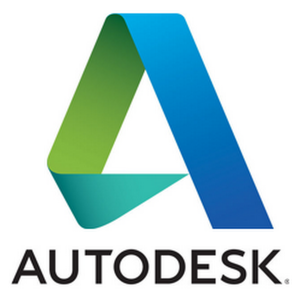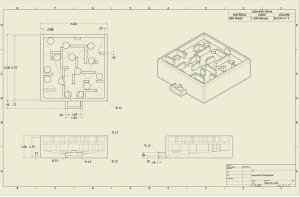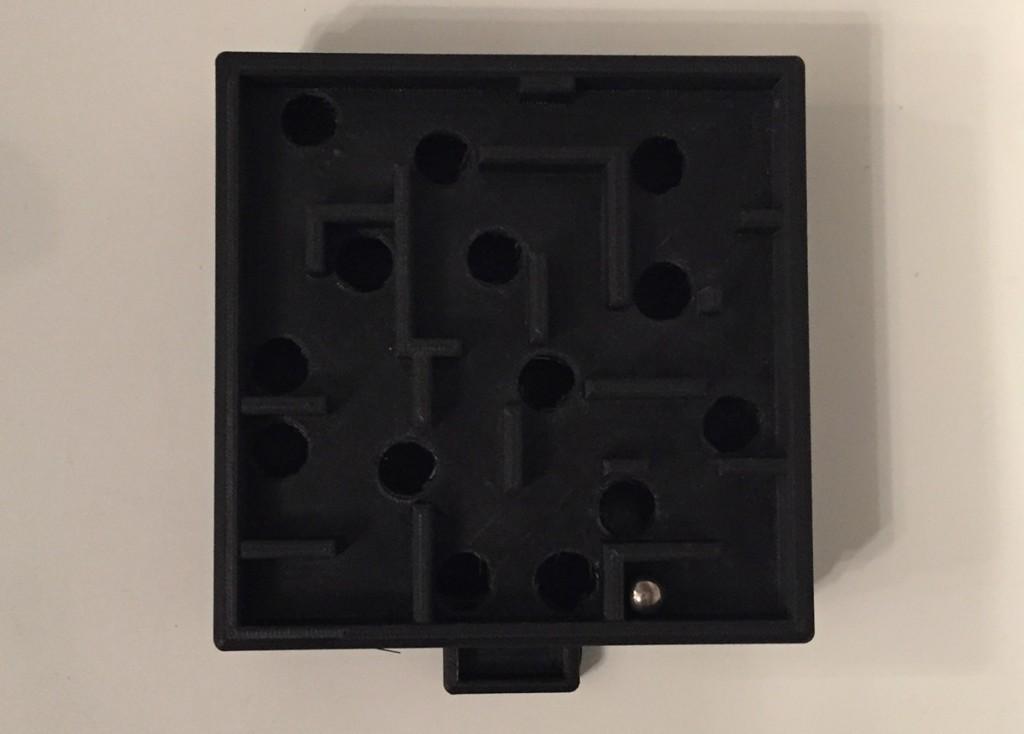 Despite mountains of evidence to the contrary, bringing 3D modelling and 3D printing technology into schools is still a controversial prospect for many schools. While it is gaining popularity, and spending on STEM educational materials is growing in general, when some schools are having problems keeping classroom sizes down and textbooks up to date 3D printing can often seem like a luxury. But the fact is that very soon 3D printing and 3D design is going to be part of our daily lives and the skills learned from STEM education are going to be almost incalculably important to the next generation. Thankfully not all school districts are dragging their feet when it comes to 3D printing education.
Despite mountains of evidence to the contrary, bringing 3D modelling and 3D printing technology into schools is still a controversial prospect for many schools. While it is gaining popularity, and spending on STEM educational materials is growing in general, when some schools are having problems keeping classroom sizes down and textbooks up to date 3D printing can often seem like a luxury. But the fact is that very soon 3D printing and 3D design is going to be part of our daily lives and the skills learned from STEM education are going to be almost incalculably important to the next generation. Thankfully not all school districts are dragging their feet when it comes to 3D printing education.
Last year, Syracuse, New York high school student Ross DeVito was tasked with designing and ultimately 3D printing a project for a sophomore engineering class. Inspired by a smartphone app that uses his phone’s tilt feature to simulate classic wooden labyrinth puzzles, DeVito decided to engineer and print his own 3D printed Labyrinth Game. After studying the way real labyrinth games were constructed, he got to work designing the basic shape using 3D CAD modelling and simulation software Autodesk Inventor.
“I created this as a project, as well as the toy truck on my behance page, for a class I took during my sophomore year of highschool called CIM, computer integrated manufacturing, which is part of a set of high school engineering courses through Project Lead the Way and RIT. I am looking to pursue computer science in college,” said DeVito.
 Inventor is Autodesk’s answer to Solidworks, and is typically used to create 3D designs, prototypes, object visualizations and can even create working motion simulations. It is also capable of testing the stress levels on objects by inputting any friction characteristics, driving loads and dynamic component functions. Then Inventor’s simulation tools aid users in optimizing strength, reducing vibrations, compensating for any high-stress areas and even adjusting the size of complex objects like motors and actuators to reduce energy consumption. Autodesk Inventor is a professional-grade piece of design software that is going to be very common in real world business settings, so putting it in the hands of students is giving them an incredible head start on STEM careers.
Inventor is Autodesk’s answer to Solidworks, and is typically used to create 3D designs, prototypes, object visualizations and can even create working motion simulations. It is also capable of testing the stress levels on objects by inputting any friction characteristics, driving loads and dynamic component functions. Then Inventor’s simulation tools aid users in optimizing strength, reducing vibrations, compensating for any high-stress areas and even adjusting the size of complex objects like motors and actuators to reduce energy consumption. Autodesk Inventor is a professional-grade piece of design software that is going to be very common in real world business settings, so putting it in the hands of students is giving them an incredible head start on STEM careers.
After DeVito designed the basic shape of the box and the internal slopes he went to the auto shop and borrowed some metal ball bearings to use in his labyrinth and took some accurate measurements. DeVito finished the labyrinth design by including the holes and the channels inside of the box. He also sized the walls to accommodate the bearings and ultimately modelled the exit point for the ball once the labyrinth was beaten. Once the final design was done, DeVito printed out a 1:4 scale prototype to make sure the walls wouldn’t collapse during printing. While the test model printed fine, DeVito still decided to add some support structures for his final, full-sized print.
 Of course no experience is really a learning experience unless something goes wrong with your project, and this was sadly true for DeVito and his labyrinth game. He 3D printed the full-sized version on his school’s MakerBot Replicator 2X as a single print using ABS. Unfortunately, due to the size of his print and the length of time that the labyrinth spent on the heated platform, two of the bottom corners of the box warped up a bit. The school’s MakerBot also glitched during printing and displaced a single layer in the middle of the labyrinth box, although DeVito noted that the printer seemed to correct itself and continued to print without incident.
Of course no experience is really a learning experience unless something goes wrong with your project, and this was sadly true for DeVito and his labyrinth game. He 3D printed the full-sized version on his school’s MakerBot Replicator 2X as a single print using ABS. Unfortunately, due to the size of his print and the length of time that the labyrinth spent on the heated platform, two of the bottom corners of the box warped up a bit. The school’s MakerBot also glitched during printing and displaced a single layer in the middle of the labyrinth box, although DeVito noted that the printer seemed to correct itself and continued to print without incident.
Thankfully, DeVito said that the few printing errors don’t seem to affect the labyrinth’s functionality, and he’s had no problems using it. However, he does note that there are a few points where the ball doesn’t move smoothly that would most likely be improved with a higher print quality. Personally, I also think using PLA for the print, and not bothering with the heated bed, would help his print quality immensely. But those are lessons for him to learn next time I suppose.
As DeVito gets ready for his final year of high school this fall, he plans to take more design and engineering classes in the hopes of ultimately pursuing a STEM degree in college. Considering he will have a headstart in comparison with most students who enter college, I don’t think DeVito is going to have a problem earning that degree.
You can check out more pictures of DeVito’s labyrinth game on his LinkedIn page, along with a 3D printed truck that he also designed in the same class.
Subscribe to Our Email Newsletter
Stay up-to-date on all the latest news from the 3D printing industry and receive information and offers from third party vendors.
You May Also Like
Gorilla Sports GE’s First 3D Printed Titanium Cast
How do you help a gorilla with a broken arm? Sounds like the start of a bad joke a zookeeper might tell, but it’s an actual dilemma recently faced by...
Nylon 3D Printed Parts Made More Functional with Coatings & Colors
Parts 3D printed from polyamide (PA, Nylon) 12 using powder bed fusion (PBF) are a mainstay in the additive manufacturing (AM) industry. While post-finishing processes have improved the porosity of...
$25M to Back Sintavia’s Largest Expansion of Metal 3D Printing Capacity Since 2019
Sintavia, the digital manufacturing company specializing in mission-critical parts for strategic sectors, announced a $25 million investment to increase its production capacity, the largest expansion to its operations since 2019....
Velo3D Initiates Public Offering in a Bid to Strengthen Financial Foundations and Drive Future Growth
Velo3D (NYSE: VLD) has been among a number of publicly traded 3D printing firms that have attempted to weather the current macroeconomic climate. After posting a challenging financial report for 2023,...
































